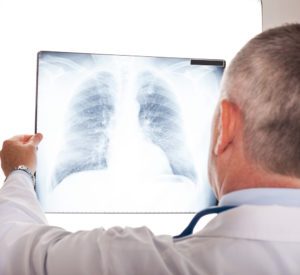In the realm of medical imaging, digital X-ray technology has become a game-changer, providing healthcare professionals with enhanced tools to diagnose and treat patients more accurately and efficiently. Compared to traditional X-ray methods, digital X-rays offer clearer images, faster results, and reduced radiation exposure, all of which contribute to improved patient care.
Superior Image Quality for More Accurate Diagnoses
One of the main benefits of digital X-ray technology is its advanced image quality. Contrary to traditional film X-rays, digital systems allow for enhanced resolution and image clarity, which are vital for detecting even the smallest abnormalities. Key features include:
- Magnification. The ability to zoom in on specific areas of interest, improving detail and clarity.
- Contrast and Brightness Adjustments. These features enable radiologists to adjust images in real time, making it easier to identify fractures, tumors, or other issues.
- Sharper, More Detailed Images. Digital images are free from the graininess that can occur in traditional films, ensuring every detail is visible.
This enhanced image quality helps healthcare providers make more accurate diagnoses and reduces the need for repeat imaging, which is both beneficial for patients and more cost-effective for healthcare facilities.
Faster Results Lead to Timelier Care
Another significant benefit of digital X-ray technology is the speed at which results are obtained. Traditional X-rays required film development, a process that could delay diagnosis and treatment. With digital X-rays, results are available almost instantly, enabling healthcare providers to:
- Provide quicker diagnoses. With digital imaging, doctors can view images immediately after the scan, allowing for faster treatment decisions.
- Respond rapidly in emergencies. Whether it’s for trauma patients or in cases where time-sensitive diagnoses are needed (like stroke or heart attack evaluation), faster results can save lives.
- Improve efficiency in routine care. In routine cases, quicker image processing leads to shorter wait times for patients, making the entire process more efficient.
This speed is particularly valuable in urgent care settings, where timely interventions can significantly improve patient outcomes.
Lower Radiation Exposure for Safer Imaging
One of the most important considerations when using X-rays is radiation exposure. Digital X-rays offer a major safety advantage over traditional film X-rays by using lower doses of radiation. This is especially important for:
- Frequent Patients. Individuals who need multiple scans over time, such as those with chronic conditions or recovering from injuries, benefit from the reduced radiation exposure.
- Children and Pregnant Women. These populations are more sensitive to radiation, and digital X-rays help minimize risks without compromising image quality.
- Healthcare Providers. Radiology technicians and doctors also face less exposure, which is important for their long-term health.
Despite the lower radiation levels, digital X-rays still provide high-quality, diagnostic images, making them a safer choice for everyone involved.
Enhanced Patient Care Through Better Technology
Not only do digital X-rays provide a safer and more accurate method for diagnosis, but they also improve the patient experience by offering:
- Faster turnaround times. With instant image availability, patients spend less time waiting for results and more time focusing on their treatment.
- Less need for repeat scans. Clearer images mean fewer chances of needing a second scan, which is more comfortable for patients and reduces unnecessary radiation exposure.
- Easier access to results. Digital images can be stored electronically, shared with specialists instantly, and kept in the patient’s digital medical record for easy reference.
These improvements streamline the process and help make healthcare more accessible and efficient.
Digital X-Ray Imaging in Dallas
Digital X-ray technology has transformed medical imaging by providing clearer images, faster results, and a safer experience for both patients and healthcare providers. The improved diagnostic accuracy and reduced radiation exposure make digital X-rays an essential tool in modern medicine, enabling quicker treatments and ultimately improving patient outcomes. Whether for emergency care or routine screenings, digital X-rays are paving the way for better care, faster recovery, and safer imaging practices.
Contact Southwest Diagnostic Imaging Center at (214) 345-6905 for more information today.
Sources:
https://www.news-medical.net/health/Digital-Radiology-Advantages.aspx


 A one time chest X-ray can help diagnose conditions like COPD, but even more importantly, it can be used to determine how a particular disease is progressing or if a prescribed treatment is working. In this case, a series of chest X-rays will be ordered so the doctor can quickly see any changes or improvements.
A one time chest X-ray can help diagnose conditions like COPD, but even more importantly, it can be used to determine how a particular disease is progressing or if a prescribed treatment is working. In this case, a series of chest X-rays will be ordered so the doctor can quickly see any changes or improvements. id you know that more than
id you know that more than  The dog days of summer are approaching with warm weather and vacation plans.
The dog days of summer are approaching with warm weather and vacation plans.